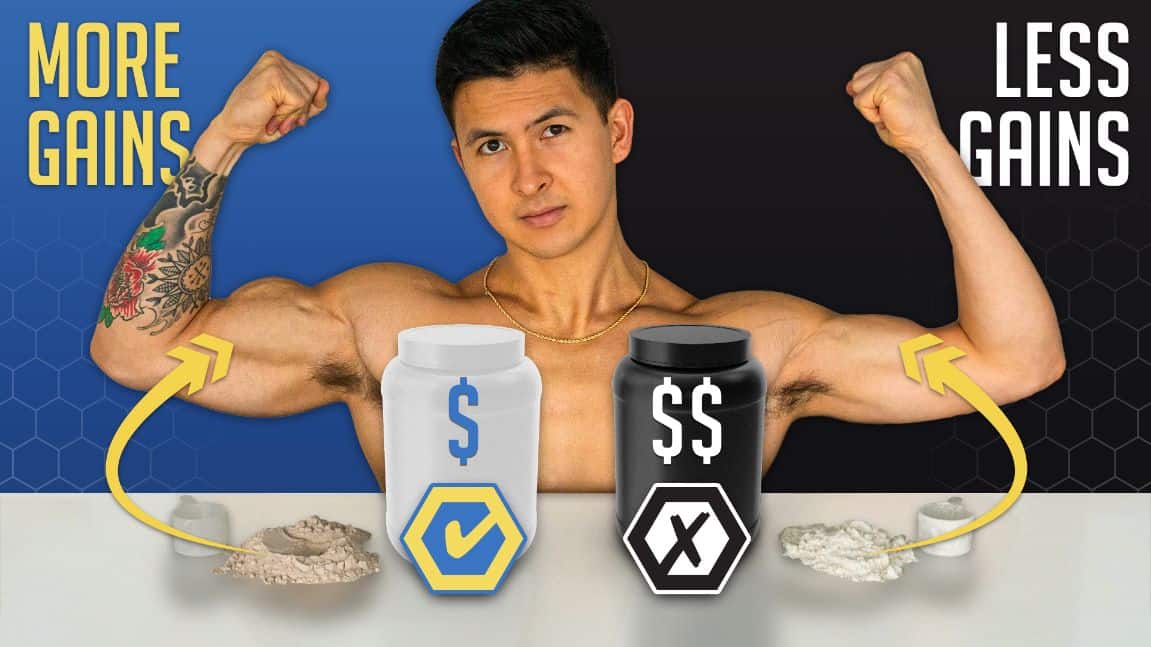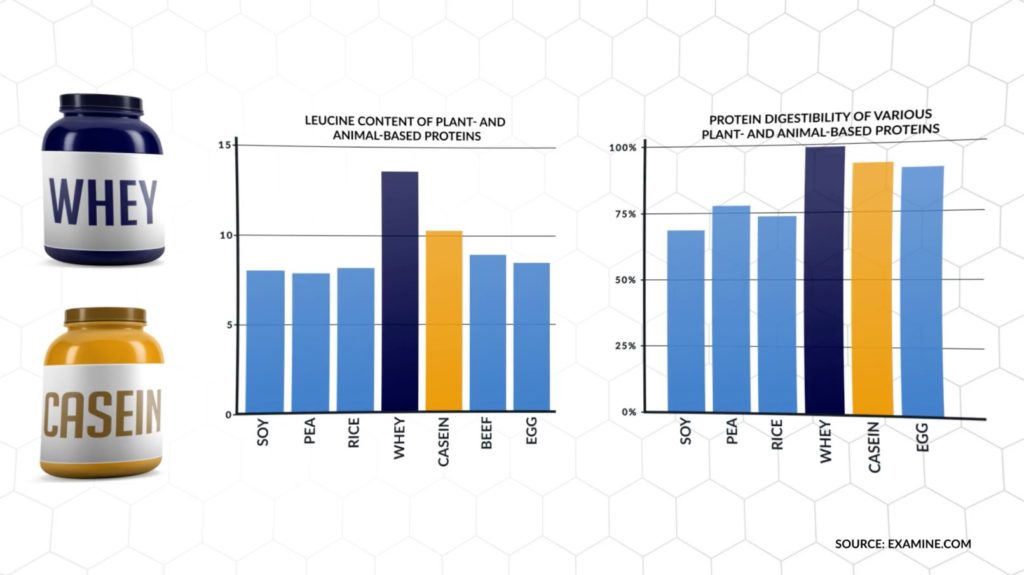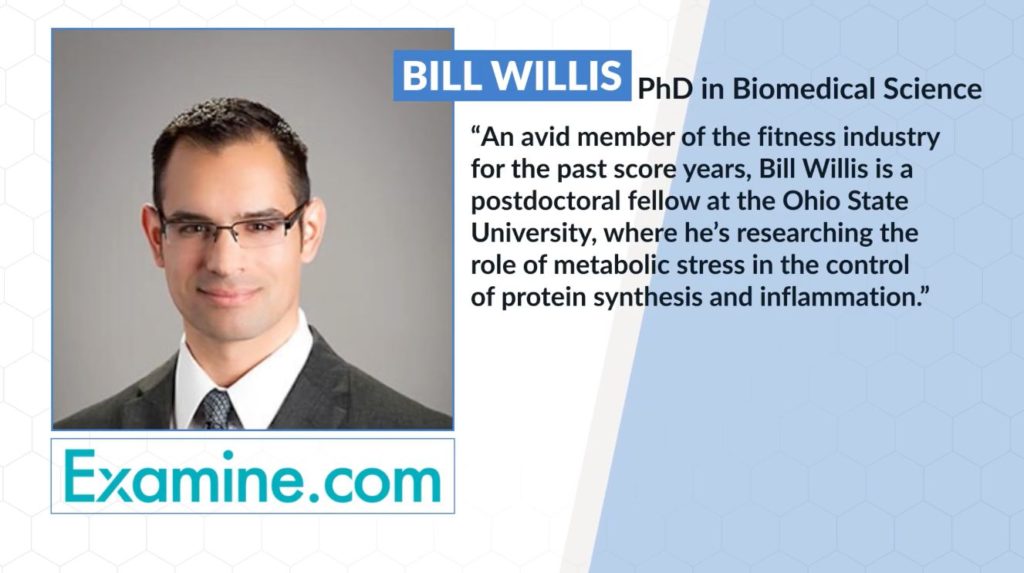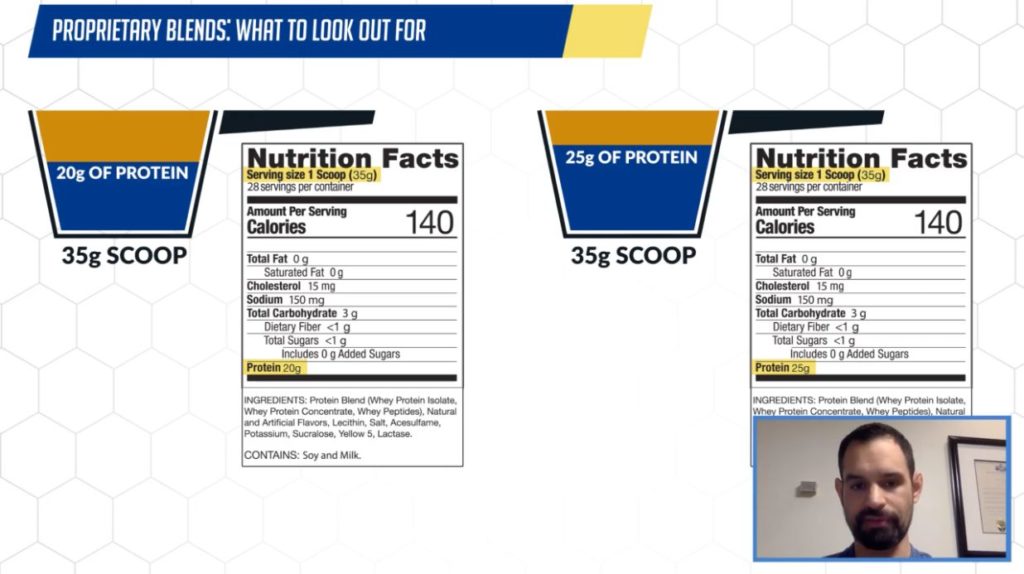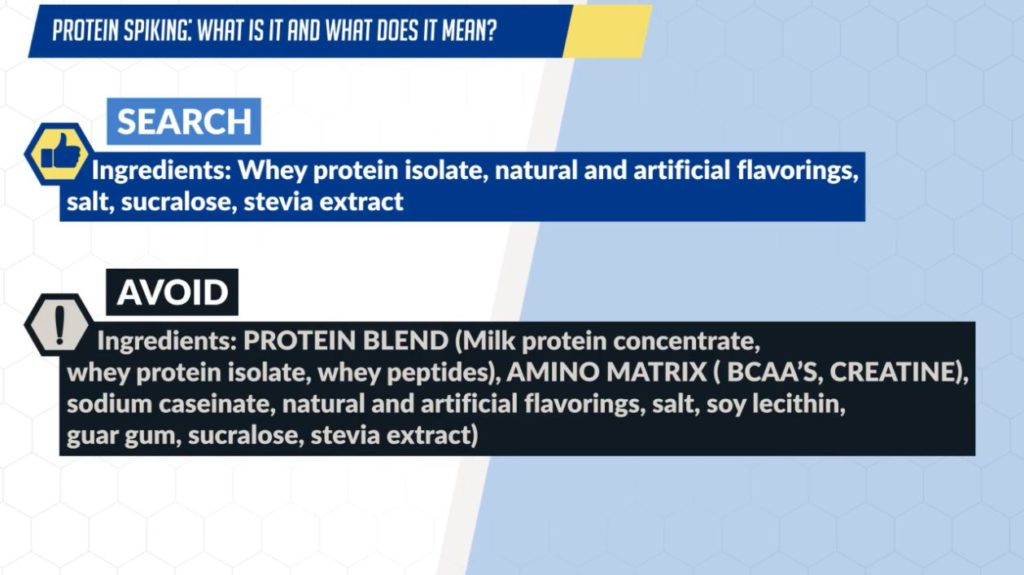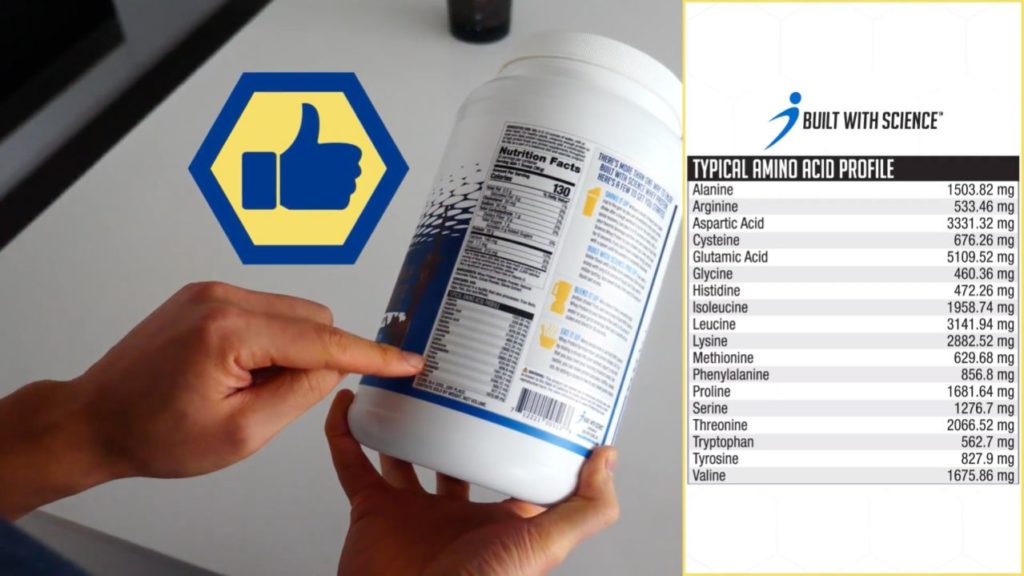Best Protein Powder with Amino Acids (Good vs Bad Protein Powder)
Which protein powder is best? Given the seemingly endless options, you may be at a loss. Don't worry. Here, I cover everything you need to know to pick the right type of protein powder.
If you’ve seen any of my supplement articles, then you know I’m a big fan of protein powder. Why? Simply because of its practicality. And, not forgetting, the various advantages and potential muscle-building benefits it can provide. But once you do decide that you’re ready to invest in a protein powder, it’s important that you first get well-informed on 2 aspects, which are the:
- Differences between the various types of protein powders out there AND
- Things to look for and things to avoid when comparing different brands
And these are exactly the things I'm going to cover here. By the end of this article, you’ll know exactly what type of protein is right for you - and how to separate the good from the not-so-good options out there.
Of course, by now, you should know that supplementation is useless if you’re not training correctly. That's why I've designed every BWS program to be an all-in-one, science-based process that’ll get you to your dream physique FAST. And best of all? It's all rooted in science. So, before we begin:
Click the button below to take my analysis quiz to discover the best program for you:
↓
Which protein is best with amino acids?
Leucine appears to be one of the most important amino acids in driving muscle growth. That said, it isn’t the only amino acid you should look out. In general, you’d be better off with protein sources that deliver all the 9 essential amino acids your body needs for optimal hypertophy results.
What Type Of Protein Powder Is The Best?
First, let’s cover what type of protein powder may be best for you. As you probably already know, there is an overwhelming amount of different protein powders on the market. But here's the truth. Research has made it clear that Whey protein comes out on top.
This is because Whey protein has 2 advantages; it's:
- Higher in leucine, which is one of the most important amino acids for muscle growth AND
- More effectively absorbed and used by the body when compared to various other protein powders and other protein sources in general
Casein protein comes in at a close second. It contains slightly less leucine and overall protein content. But it is a much slower digesting protein than Whey. In theory, this would mean that Casein would be the more effective option to take as a pre-sleep meal. That's because it would allow us to stimulate protein synthesis overnight. However, recent research seems to suggest that any high-quality protein, such as Whey, would do the job just as effectively.
Which Of The Whey Protein Powder Types Is Best?
So, Whey seems to be the best option. But Whey protein can be further broken down into 3 types: Whey Concentrate, Whey Isolate, and Whey Hydrolysate.
The main difference is that Whey Concentrate can range anywhere from 35-80% protein. And typically contain the highest amount of lactose, carbs, and fats. Whereas Whey Isolates, although typically a bit more costly, have to go through an additional filtration process. And are required to be at least 90% protein by weight. As a result, Whey Isolates have considerably less fat and carbs. Hydrolysates, on the other hand, are whey concentrates or isolates that have been “pre-digested”. This is believed to help with its absorption. That said, research has not shown Hydrosylates to be any more effective at increasing size or strength than the other two options. And yet - is typically the most expensive option.
So, essentially it’s like buying chicken. Whey concentrates can be thought of as chicken thighs. They deliver a good amount of protein. But come with additional fat and calories. Whereas whey isolate can be thought of as chicken breast. It's a bit more costly than thighs. But packs a much higher protein content with less fat and calories. Whereas whey hydrolysate could be thought of as extra lean ground chicken breast. It goes through a bit more processing, is typically the most expensive option, yet delivers the same amount of protein relative to calories, fats, and carbs as chicken breast does.
Meaning that for the best bang for your buck, for most people, a good quality Whey isolate protein is your best bet. It delivers the highest amount of protein. And is slightly better for those who are lactose intolerant or tend to have digestive issues.
If you wish to get more guidance on this, don't worry. Our 3-on-1 coaching program can help. Our 3-on-1 coaching program takes the guesswork out of supplementation, training, nutrition, and even mobility work - so you can focus on what matters: making gains. If you're interested:
Click the button below to find out more about the 3-on-1 coaching program:
↓
What About Plant-Based Protein Powders?
Now, as for plant-based options, this can be a good option if you have intolerances or sensitivities to Whey. The problem with plant-based proteins though is that they tend to be deficient in certain Essential Amino Acids. And are, therefore, less effective at promoting protein synthesis than Whey is. But, research has shown that you can partially compensate for this by combining different plant-based sources.
For example, pea protein is low in the essential amino acid Methionine. Whereas rice protein contains considerably more Methionine. But is low in the essential amino acid Lysine. Meaning that when you look for a plant-based protein powder, one with a good blend of rice and pea protein would likely be the best option. Soy protein, although subject to much controversy, is another good plant-based protein powder. That's because it has a good amount of all the essential amino acids. And is, therefore, worth considering.
Separating The Good Protein Powder Brands From The Bad
By now, you should have a clear idea of the best type of protein powder that suits your needs. The next step is learning how to separate the good brands from the not-so-good brands. Because unfortunately, there’s a lot of “tricks” that supplement companies can use to deceive you. And to help us out with this is Examine.com researcher Bill Willis, who has done a considerable amount of research and work on this exact topic.
Here's a list of things to avoid in your protein powder.
Proprietary Blends
The first thing to look for, or avoid, is the use of something called proprietary blends. This could look something like the following on the nutrition label: Protein blend (Whey protein concentrate, whey protein isolate). By using a blend in the label instead of just a single protein source (e.g. “Whey isolate”), companies don’t have to disclose the individual amount of each ingredient in the blend. This means that for a protein blend like the following, you could be getting:
- Mostly (e.g. 97%) whey concentrate BUT
- Only a small amount (e.g. 3%) of whey isolate
... In which case what you’re buying is just a more expensive whey protein concentrate. In addition, whey concentrates aren’t held to the same standards as Whey isolates are. That means they could also get away with using a very poor quality whey protein concentrate. For example, one that is only 60% in protein rather than the 80% protein content - which is what a decent whey concentrate should have.
This, again, would just reduce the amount of protein you’re actually getting relative to the additional calories, fats, and carbs you’d be consuming.
To avoid falling into these traps, look at the nutrition label. More specifically, look at the amount of protein you’re actually getting relative to the total scoop size. For example, one protein powder brand can deliver 25g of protein for a 35g scoop. Whereas another seemingly identical product could only deliver 20g of protein for that same 35g scoop.
So, pay attention to those two numbers. Aim to find a protein powder that doesn’t have a very big discrepancy between them. Otherwise, you’ll be paying for less of what you really need (protein) and instead just getting more of the extra “junk” and fillers.
Protein Spiking
The next trap you want to avoid falling for is something called protein spiking. This is a loophole that can allow supplement companies to put in less protein than what’s actually listed on the label. Something you should know is that the FDA determines what the protein content of a powder is by testing for its overall nitrogen content. And so, what some companies will do is add cheap nitrogen-containing compounds into their formula. For example, BCAA’s or creatine. And this artificially boosts the amount of protein they can claim on the label. So in this case, you think you’re getting a certain amount of protein - but are actually getting much less.
To avoid this, again, just take a closer look at the nutrition label. It should be pretty straightforward what’s included in there. You should only see a handful of ingredients at most.
Avoid terms like “protein blends”, “amino acid matrix” or “amino acid blends”.
In addition, look for brands that fully disclose the amino acid profile of their protein. This helps indicate that they’re fully transparent about the specific amino acid content of their product. And are, therefore, less likely to have spiked it.
Case in point? Our Built With Science Isolate Whey Protein Powder delivers 29 eye-watering grams of 100% whey isolate protein per scoop — and we're not afraid to reveal its typical amino acid profile (because we have nothing to hide).
See for yourself:
Contamination
The last and final thing to look out for is contamination. Third-party testing results from a 2018 analysis by the Clean Label Project found that among 134 tested protein powders, the vast majority of them had detectable levels of :
- Heavy metals AND
- Plastic derivatives
... As a result of their ingredient sourcing and manufacturing practices.
Now, detectable doesn’t mean dangerous. But many of these protein powders did indeed have levels that surpassed the acceptable levels. Which is something you’d obviously want to avoid. And this is a common occurrence because supplement companies aren’t required to test their products for contaminants. And are instead left voluntarily to run those tests if they wish to pay the additional costs.
Which as you’d expect, many companies don’t do. So to minimize your risk as a consumer, simply do a little bit of digging. Find out what their testing protocols are and specifically what they test for. Looking for certifications such as NSF and GMP on their website are also good signs and indications that they take their quality-control practices seriously.
Key Points To Keep In Mind
So, to sum the article up, here are the main points to keep in mind and look out for when purchasing your protein:
- Whey isolate protein is likely the best bang for your buck. If going for a plant-based option, opt for a mixed protein powder (e.g. rice/pea protein).
- Avoid powders with proprietary blends by looking closely at the nutrition label. There should not be a ton of listed ingredients (e.g. “blends”). Nor should there be a big gap between the actual protein you get per serving compared to the total serving size.
- To potentially avoid harmful levels of contaminants, do some research on the quality-control practices and testing protocols of the manufacturer.
The Additional Effort Is Worth It
If you’re going to be investing in protein, it’s worth putting in the additional effort to ensure that what you’re getting is a high-quality product aligned with your specific goals.
And for a step-by-step program that applies this same level of science and detail to your workouts, nutrition, and supplementation so that you can truly transform your body in the most efficient way possible, then:
Click the button below to take my analysis quiz to discover the best program for you:
↓
And a big thank you to Bill Willis from examine.com for his help today. For those unfamiliar with examine.com, it’s a free database of unbiased nutrition and supplement information led by a team of scientists and researchers. If you want to learn more about any specific supplement and the current state of the research for that supplement, then I’d highly recommend that you check them out.
Anyways that’s it for today guys! I hope you all enjoyed it! Don’t forget to give me a follow and connect with me on Instagram, Facebook, and Youtube as well, in order to stay up to date with my content.






